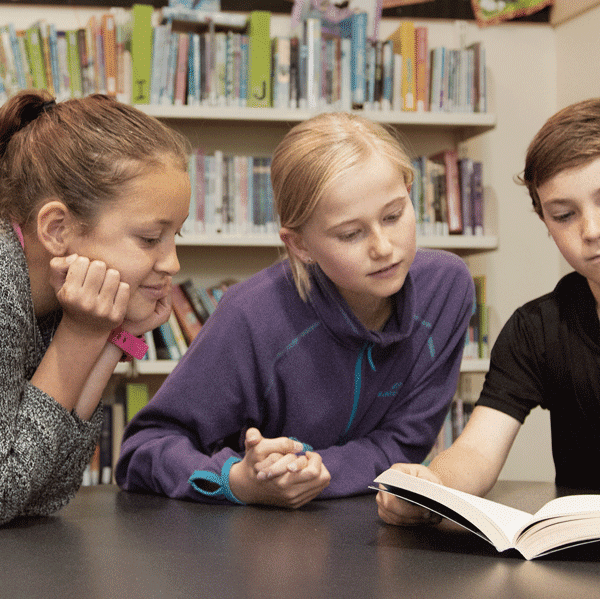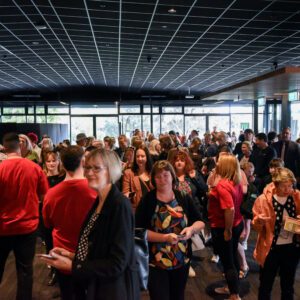At Raroa Normal Intermediate in Wellington’s northern suburbs, teachers have embraced the concept of student agency.
In a flexible learning area that is the central hub of the technology classrooms, students are working, usually in pairs or small groups. Some are designing or researching on computers, two girls are making flowers out of wire and fabric, others are painting or hard at work with glue guns as part of their design project.
Students are moving in and out of rooms connected to the “learning street”, depending on the need or specialist teacher required. In the food technology room, two girls are carving up a pastry dessert, a group of boys is doing a pile of dishes, cupcakes are cooling on a bench, and a teacher is in a corner with a handful of students working through their ideas.
Next door is a room that they haven’t managed to name because it’s so much more than just hard materials. Following the theme from TV show Design Junkies, one group is upcycling an old ottoman and figuring out how many strips of wood will be needed to run around the circumference. Another pair is sanding a retro toolbox they bought on Trade Me and others are turning an old planter box into a kennel for a small dog.
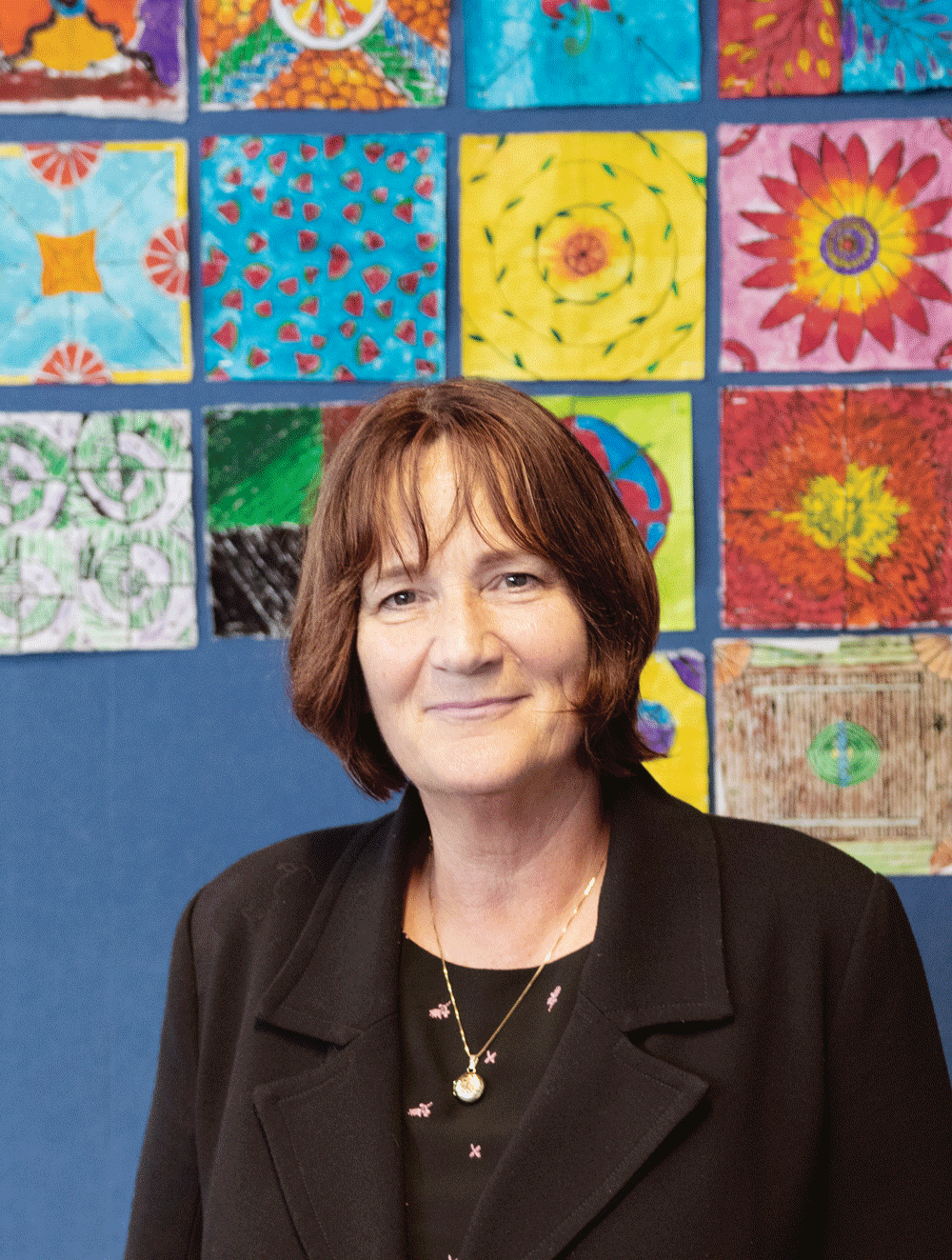
Principal Christine Brown says the journey towards greater student agency began in 2013 with a theory-based approach to redesigning the school curriculum. This included the technology area – now called Design Production Education (DPE).
“We spent a lot of time researching, going to conferences, listening to different people, getting people in to talk to us. We put all those things together to develop our local curriculum, and had student and parent voice in there as well.”
Deputy Principal Stephen Eames says they wanted to give the students opportunities to work within their strengths and passions, or have an element of choice, so that they had “buy in”.
Eames likes the concept of ideas shaping the rooms, rather than the rooms shaping the ideas.
“You’re flipping the model, giving students a little bit more agency, where they are not defined by a particular room for a particular project. They can do some art and design in the art room, and then take that on to the hard materials, where they could laser cut it, or develop it further.”
“You’re flipping the model, giving students a little bit more agency, where they are not defined by a particular room for a particular project.”
Deputy Principal Stephen Eames
Eames believes that students need time to develop the skills to manage their own learning to enable high levels of agency and thrive in modern learning environments.
“So supporting them on that growth is important, and I think everybody falls into that at some point, where they suffer, slightly beyond organised chaos.”
Because there is such a strong focus on collaboration and communication, ESOL students and others with additional learning needs receive extra support to help them achieve and develop agency in a way that is appropriate to their individual needs. Team teaching and flexible classroom spaces where teachers can adapt to suit the needs of students are features of the school.
It’s a commonly voiced concern that such environments could become chaotic and that children may easily get distracted or lost in the crowd, particularly for those with additional learning needs. However, Brown says what they’ve found is that a number of teachers end up knowing each student really well, which the leadership team from Onslow College had quickly picked up on at a recent meeting.
“One of them was saying when they come over and interview the teachers, they were just so impressed at how well the teachers know the students. So if a teacher was away, another one in that team is working closely, so can sit there and talk about them.
“They have to have really good processes for monitoring the students, and evaluating their progress. But it’s a whole team of them doing it together, or it’s a pair of them doing it together, and they can all support them on this journey of agency,” says Brown.
Teacher Melissa Julian says modern learning environments can work, but teachers just need to think about how it’s going to affect children who need extra support.
Teacher Melissa Julian says modern learning environments can work, but teachers just need to think about how it’s going to affect children who need extra support, and put things in place that make the students feel they have some control over what they’re doing.
“Especially at the start of the year, you’re pretty much alongside, showing the process. That independence may not be there, but slowly over time, as they get used to that routine, you sort of edge yourself out.
“I always know that if something new is about to start, you have to start back with that checking in,” she says.
“And everything we do, I’m always thinking, how are these guys going to be with this, what can we do to make sure it’s going to work for them?”
Julian believes increased agency and working in small groups can work well for children with additional learning needs and it also teaches other children to be inclusive of others, not just their friends.
Support for students with dyslexia
Teacher Lynne Dunn runs a weekly support group for about 20 students who have been diagnosed with dyslexia. The students receive academic, social and emotional support and she introduces new tools and strategies they might want to try.
A key purpose of the group is to make the students feel good about their strengths and know that they can achieve.
“When they’re in a group situation, they know it’s great for them to volunteer in the areas of their skills. Not all people in the group necessarily know they have a learning difference, because it’s up to the students who they share with.
Teachers also receive professional development training and are open to student requests such as giving reading material ahead of time, using digital copies instead of hard copies or having a maths test read to a student.
“I know that they like being able to do what the rest of the class is doing, and to do it well, and the adjustments they make, or the staff member makes, lets them be able to finish whatever it is they’re working on, or take a part, rather than not be doing what everyone else is doing, and be seen to be failing.
“With adjustments, they can still be doing the same learning, it might just be in a different way. Or maybe with a different timeframe. But they feel like they belong. And that’s where celebrating their strengths is huge, because that’s a way that definitely makes them feel that [sense of] belonging,” says Dunn.
Students go on to college so much more confident in their abilities, because they’re taught to see dyslexia as a gift rather than an impediment.
Brown says those students go on to college so much more confident in their abilities, because they’re taught to see dyslexia as a gift rather than an impediment. College staff have commented on the positive difference they’ve seen in the students coming through in the five years the programme has been running.
Thirteen-year-old twins Hannah and Jess Stark were diagnosed with dyslexia when they were six and also have dyscalculia. Hannah says that at first she thought having dyslexia was “not really the best thing”, but being in the support group has changed her outlook.
“Putting it into a different way and learning there’s lots of strengths really helps,” she says.
Jess says that being in a support group helps them see that they’re not alone.
“We didn’t know there were other people around us – even in the same classroom – that struggled with the same things. But in a dyslexic group we talk about our struggles.”
Jess says being in charge of their own learning means they can be really passionate about something and implement it, “make it into something that you’re really proud of”.
“I think doing your own learning really helps you in the real world because a teacher’s not always going to be there to help and guide you.”
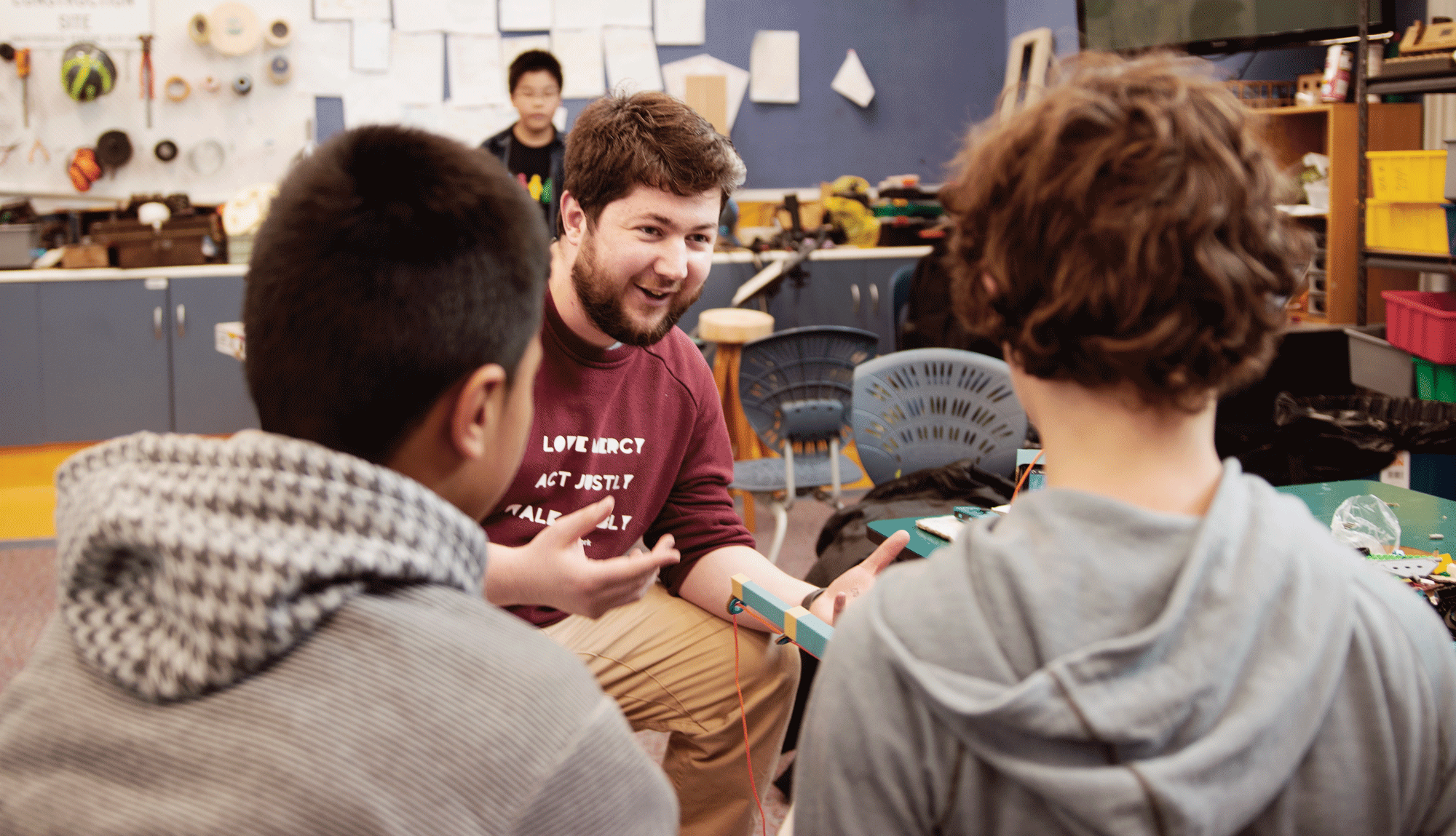
Jess worked with teacher Chris Johnston on designing the school yearbook. He says they went through a process of learning how to use Illustrator, InDesign and other Creative Cloud apps.
“Dyslexia didn’t hold her back – it made her particularly good at doing that because of her spatial awareness and creative flair,” he says.
Johnston says the classroom can look chaotic on first entering because so much individualised learning is going on. “We trust them with a larger degree of independence, which they in turn respect and show that they can manage. I’m more of a facilitator in the room,” he says.
“It’s less of the teacher trying to wrangle students, more about us working together.”
Teacher Chris Johnston
“Outsiders often remark that the kids seem more independent or they seem older than kids in their school at the same age. I think that’s the mark of independence that they have. They are passionate about things and able to work in the area of their interests, so they’re able to be engaged for longer. It’s less of the teacher trying to wrangle students, more about us working together.
“Not every child is at the same place. You meet the child where they are and you look for that thing that is just beyond their reach,” he says. Giving every student a “cookie cutter” worksheet and telling them they all have to do the same thing would set up some students to fail.
“But if you’re able to use tasks that are more open-ended, the kids that can achieve at this [basic] level will achieve at that level. But the kids who can take it beyond, there’s much more scope for that as well.”
The individual path to student agency
Deputy Principal Stephen Eames says that in the Design Production Education programme there are certain “toolsets” that all students need to have that will increase their ability to have agency and apply it.
“For instance in the cooking room, they need to understand how to measure, they need to know how to use that equipment,” he says.
“You give them the foundations so they can delve into whatever their projects are. To do that, they will need a whole set of skills – they need to be able to collaborate, they need to be able to communicate, they need to have critical thinking. And then, obviously, their mindset is a big one. They need to be able to persevere, they need to be able to ask questions. That’s all about scaffolding the ability to be able to have a little bit more ownership, and a little bit more choice in what they’re doing.”
The cooking room is an example of the diversity of agency that students bring. With the popularity of Masterchef and My Food Bag, teachers are finding that many students are already way past the basics when they start intermediate.
With the popularity of Masterchef and My Food Bag, teachers are finding that many students are already way past the [cooking] basics when they start intermediate.
“Kids are coming to school with the skills that don’t require them to learn how to do muffins across the classroom, you know, they have a range of skills. So we need to make sure they’ve got the access to be able to stretch the limits.”
As the year goes on and expectations and foundational skills are established, increased understanding leads to increased choice. “They start to specifically match toolsets to what they’re doing. When they need it they’ll get it, rather than just in case they need it. So it’s applied.
“There are six different rooms, and they get a taster so they can make an informed choice around what they want to pursue a little bit more. So the next two sessions are five-week sessions, and they get a chance to stretch their skill in that particular room. And then the last block is a 10-11 week block, where that’s the thing that they are most interested in.”
Eames says that with adolescent learners there’s often a correlation between what they’re passionate about, and a personal connection with the teacher who is delivering that genre.
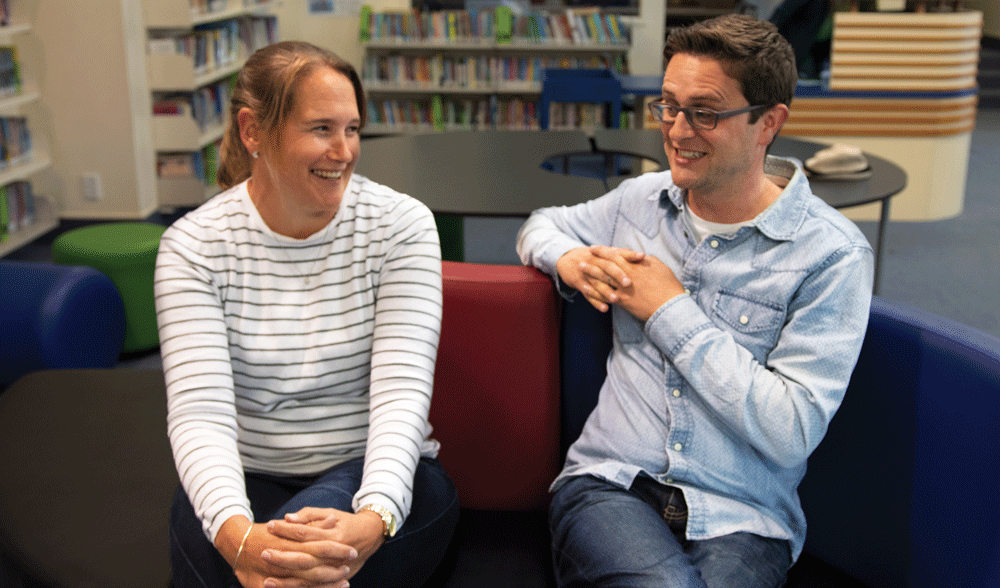
“The philosophy there is that the teacher with the best relationship is going to be the person their learning is accelerated in, because they’ll learn quicker with the person that they have the relationship with. So, if we’re focusing more on skills rather than knowledge, it doesn’t really matter what the genre is, because they’ll excel in that particular room.”
Students in the driver’s seat
Student motivation, behaviour and progress have shot up since Hampden Street School in Nelson introduced greater student agency. With new modern learning environments, the open classrooms prompted the school leadership to look at different ways of doing things.
Principal Don McLean says teaching is now about students driving their own learning.
“In open plan MLE classrooms you need to allow the children to own their learning a bit more,” he says. “Nowadays children have devices and access to the internet so they can get the information they need. The role of the teacher now is that processing and the support, facilitation and activation of learning.”
“We’ve got a number of ORS students and a number of children with some general high needs and this gives them some choice. This also takes the focus away from the deficiencies in their learning. So they mightn’t be strong at reading or writing but they might actually be brilliant at science and they can lead the charge and the discussion around science and then have the support of their peers to help them in those other areas that they aren’t so strong in.”
McLean says that for an autistic child, who tends to see their world in a very focused way, being able to drive their own learning is actually a “no-brainer”.
“The kids can choose to set their pathway, look at something and focus on it for themselves. Something we’re really trying to do as the students get up the school is how you can do that with someone else in a collaborative way.”
Teacher Noel McClements says they’re preparing children for an unknown future.
“We don’t know what [the future’s] going to be like [or] what jobs are even going to be around in 20 years’ time. Nobody can tell.”
Teacher Noel McClements
“We don’t know what it’s going to be like, and the rate that things are moving forward, with the advances that have happened in technology so far – we look at predictions about what jobs are even going to be around in 20 years’ time. Nobody can tell.”
One thing that can be counted on is the need to be able to drive your own learning, work to your strengths and collaborate with others – key pillars of student agency. And the kids get it. When Ako visited, students frequently brought up the need to be able to work with others and prepare themselves for the real world, where teachers aren’t always on hand to supply an answer.
As student Elijah says, “It gets you collaborating with other people so that when you’re older you work with other people well.”
